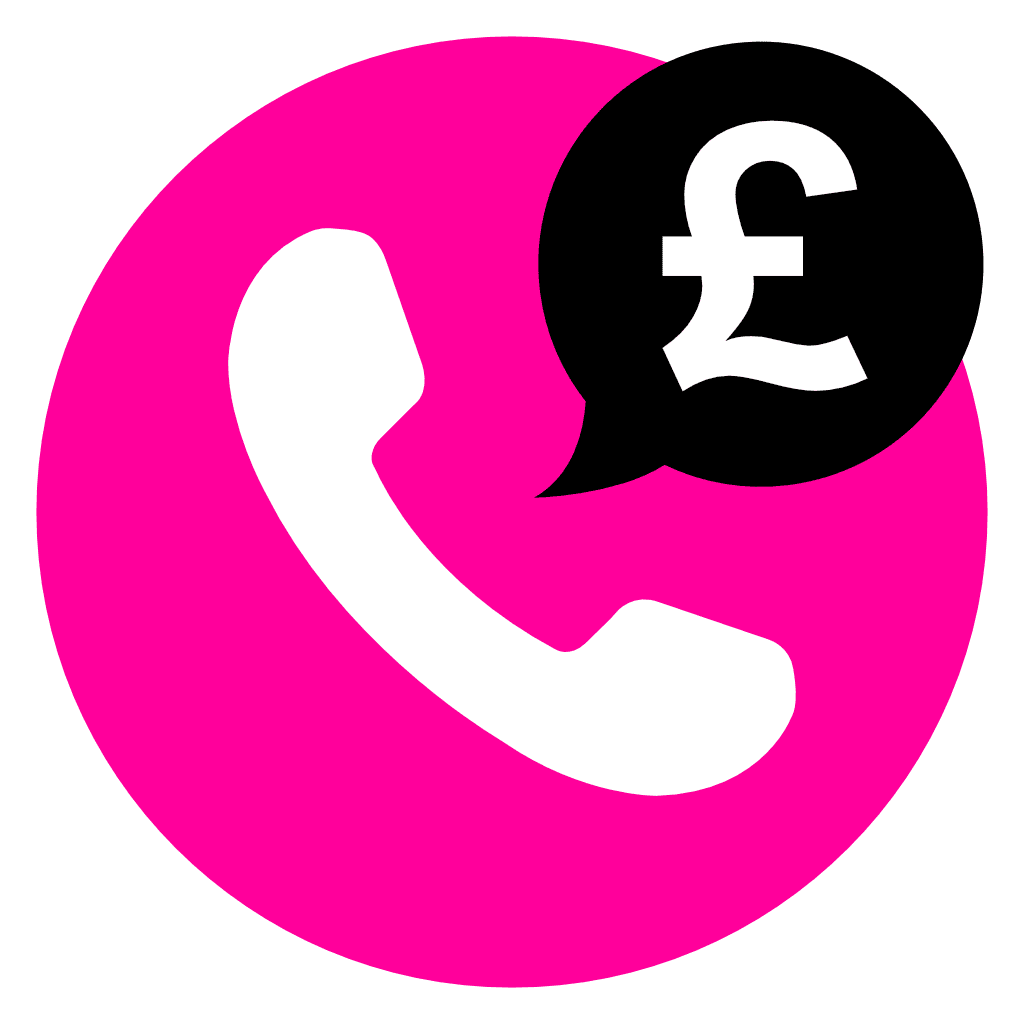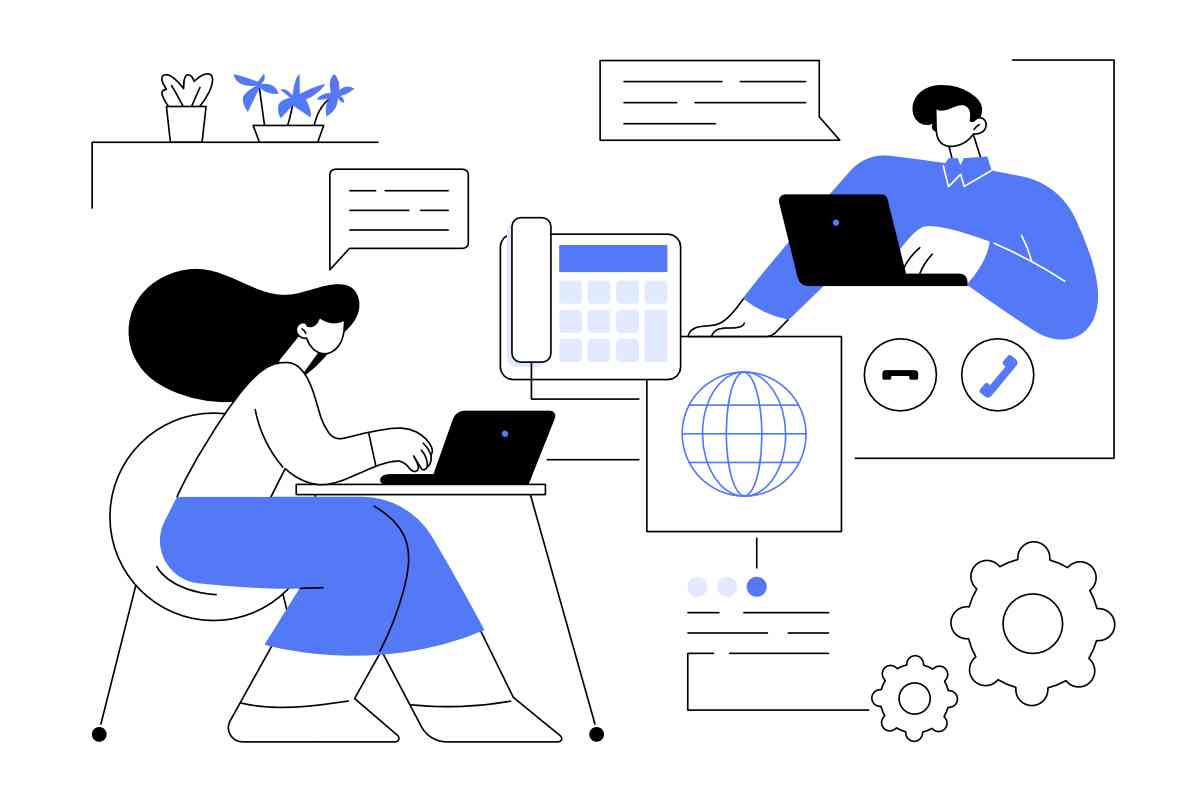Two prominent options in the VoIP and unified communications space are Vonage and 8×8. Both offer a range of solutions for businesses looking to streamline their communications, but how do they compare when it comes to features, pricing, and overall value? This article provides an in-depth comparison of Vonage vs 8×8, helping you make an informed decision for your business.
Overview of Vonage vs 8×8
Vonage
Vonage has long been a key player in the VoIP market. With its cloud-based communications system, Vonage offers a suite of products designed for businesses of all sizes. Their focus lies in delivering flexible and scalable solutions, ideal for growing companies. Their VoIP offering is complemented by services such as video conferencing, messaging, and CRM integrations, making it a good fit for companies seeking to modernise their communications infrastructure.
8×8
8×8 is another industry leader, known for its comprehensive unified communications as a service (UCaaS) solutions. 8×8’s strength lies in its all-in-one platform, which includes VoIP, video conferencing, team messaging, and contact centre solutions. The company has a reputation for reliability and security, offering services to businesses from small startups to large enterprises.
| Category | Vonage | 8×8 |
|---|---|---|
| VoIP functionality | – Call forwarding, voicemail transcription, call blocking – Mobile and desktop apps – Remote work support | – HD voice calls, call monitoring – Advanced analytics tools – Integrated with UCaaS platform |
| Unified communications | – Integrates with third-party apps (Slack, G Suite, Microsoft Teams) – VoIP, messaging, and video conferencing available | – Fully integrated UCaaS platform – VoIP, messaging, video conferencing, and collaboration tools within one ecosystem |
| Video conferencing | – Vonage Meetings – Up to 100 participants – Screen sharing and recording | – 8×8 Meet – Up to 500 participants – Webinar hosting capabilities – Integrates with Google Calendar and Microsoft Outlook |
| CRM integrations | – Salesforce, HubSpot, Zoho, and others – Streamlined customer interactions | – CRM integrations plus advanced analytics for call centres – Better insights into call centre performance metrics |
| Mobile apps | – Available for iOS and Android – Allows business communications from anywhere | – Available for iOS and Android – Seamless access to the UCaaS platform |
| International calling | – Global calling available with plans but may incur additional charges | – Unlimited calling to up to 47 countries on higher tiers – International-focused plans available |
| Call centre features | – Included in higher-tier plans, basic call centre features | – Advanced call centre tools – Detailed reporting and analytics for customer service operations |
| Video call recording | – Available in higher-tier plans, limited feature set | – Full-featured video recording and management – Suitable for webinars and large meetings |
| Analytics and reporting | – Basic call analytics available | – Advanced analytics, including call quality monitoring, usage patterns, and call centre performance |
| Security | – Standard VoIP security features | – Enhanced security options with certifications like HIPAA, GDPR, and SOC 2 compliance |
| Pricing tiers | Mobile: From £9/user/month Premium: From £14/user/month Advanced: From £19/user/month | Express: £12/user/month X2: £24/user/month X4: £44/user/month |
| Best suited for | Small businesses and startups looking for affordable, flexible VoIP with integrations | Businesses requiring comprehensive UCaaS, advanced analytics, and global communications |
| Pros | – Affordable pricing – Great CRM integration options – Flexible VoIP features for small businesses | – Comprehensive UCaaS features – Advanced analytics and reporting – Excellent international calling plans |
| Cons | – Lacks advanced analytics and video conferencing features – Call centre features are limited compared to 8×8 | – Higher pricing tiers – Extensive feature set may overwhelm small businesses |
Key features comparison
1. VoIP functionality
Vonage provides robust VoIP services with a range of features such as call forwarding, voicemail transcription, and call blocking. Its cloud-based infrastructure means businesses can access the system from anywhere, supporting remote and hybrid work environments.
8×8, on the other hand, is known for its high-quality VoIP solutions that integrate well with its broader UCaaS platform. It offers advanced features such as HD voice calls, call monitoring, and analytics tools that give businesses detailed insights into call quality and usage patterns.
Winner: In terms of VoIP features, 8×8 edges ahead with its superior analytics and monitoring capabilities, which provide more data-driven insights for businesses.
2. Unified communications
Both providers offer unified communications solutions that include video conferencing, messaging, and collaboration tools. However, the depth of integration with these tools differs.
- Vonage integrates well with third-party applications like Slack, G Suite, and Microsoft Teams, allowing businesses to incorporate Vonage into their existing workflows.
- 8×8 offers a more seamless UC experience within its own ecosystem. With 8×8, businesses can handle all communications (voice, video, messaging) within one platform, reducing the need for external applications and simplifying management.
Winner: 8×8 provides a more cohesive UCaaS platform, making it ideal for businesses looking for a single-vendor solution.
3. Video conferencing
Video conferencing has become a necessity for businesses, especially with the rise of remote working.
- Vonage offers solid video conferencing features through its Meetings product, allowing up to 100 participants with screen sharing and recording capabilities. It also integrates well with existing business tools.
- 8×8 takes video conferencing a step further with its 8×8 Meet service, which supports up to 500 participants, integrates with Google Calendar and Microsoft Outlook, and includes advanced features such as webinar hosting.
Winner: 8×8 is a stronger choice for businesses that require more robust video conferencing capabilities, particularly for large-scale meetings or webinars.
4. CRM and integrations
Both providers offer CRM integration, which is essential for businesses seeking to streamline their sales and customer service processes.
- Vonage integrates with major CRM systems, including Salesforce, HubSpot, and Zoho, allowing businesses to manage customer interactions more effectively.
- 8×8 also supports integration with CRM tools, but its proprietary analytics tools provide better insights into call centre performance, including metrics like agent activity, call resolution times, and customer satisfaction.
Winner: 8×8 offers better integration for businesses heavily reliant on customer service metrics, thanks to its robust analytics.
Vonage vs 8×8 pricing comparison
When comparing the costs between Vonage and 8×8, it’s important to consider the pricing tiers each provider offers and the specific needs of your business.
Vonage pricing
Vonage offers three main pricing tiers for businesses:
- Mobile: From £9 per user/month. Includes mobile and desktop apps, unlimited calls and SMS.
- Premium: From £14 per user/month. Adds CRM integration, multi-level auto attendant, and video conferencing.
- Advanced: From £19 per user/month. Includes additional features like call recording, visual voicemail, and on-demand AI.
Vonage also offers bespoke pricing for enterprise-level solutions.
8×8 pricing
8×8’s pricing is more varied, offering solutions from small businesses to large enterprises:
- Express: £12 per user/month. Ideal for small businesses, offering unlimited calls and SMS within the UK.
- X2: £24 per user/month. Includes team messaging, unlimited calls to 14 countries, and video conferencing for up to 100 participants.
- X4: £44 per user/month. Adds advanced analytics, call centre features, and unlimited international calling to 47 countries.
8×8’s higher-tier pricing reflects its more comprehensive feature set, particularly for businesses with global operations.
Pros and cons of Vonage vs 8×8
Vonage pros:
- Affordable pricing, especially for small businesses.
- Excellent CRM integrations.
- Strong focus on VoIP with additional flexibility through integrations.
Vonage cons:
- Video conferencing is not as robust as some competitors.
- Lacks the in-depth analytics and monitoring tools found in 8×8.
8×8 pros:
- Comprehensive unified communications platform.
- Excellent international calling packages.
- Advanced analytics for call centres and contact centres.
- Superior video conferencing capabilities.
8×8 cons:
- Higher pricing, which may be prohibitive for smaller businesses.
- Some businesses may find it overwhelming due to its extensive feature set.
Conclusion – Which is best for your business?
The choice between Vonage vs 8×8 largely depends on your business size, communication needs, and budget.
- Vonage is a great choice for SMEs or startups looking for a more affordable, flexible solution with strong CRM integrations. If your business doesn’t require advanced video conferencing or analytics tools, Vonage offers excellent value for money.
- 8×8 is the better option for businesses looking for a comprehensive, all-in-one communication platform. It is particularly well-suited for companies that require advanced analytics, extensive international calling, or large-scale video conferencing.
For smaller businesses or those looking for simplicity and flexibility, Vonage might be the right fit. However, for larger organisations or those with more complex needs, 8×8 delivers a superior set of features, albeit at a higher cost.
FAQ
Vonage is typically more affordable for small businesses, offering flexible pricing and essential VoIP features. 8×8, while more expensive, provides a more comprehensive solution with advanced analytics and global communications, making it better suited for businesses with larger or more complex communication needs.
Both Vonage and 8×8 offer high-quality VoIP calls. However, 8×8’s advanced call monitoring and quality analytics tools provide better insights, helping businesses ensure optimal call performance. Vonage offers reliable VoIP but lacks the deeper analytics capabilities found in 8×8’s platform.
Both Vonage and 8×8 support CRM integration with platforms like Salesforce and HubSpot. Vonage focuses on streamlining sales and customer service workflows, while 8×8 offers additional insights into call centre performance, making it a better fit for businesses heavily reliant on call centres.
8×8 offers a more robust video conferencing platform, supporting up to 500 participants and webinar hosting. Vonage provides video conferencing for up to 100 participants, which is suitable for smaller meetings but lacks some of the advanced features 8×8 offers for larger events.
Vonage is generally more affordable, with pricing starting from £9 per user/month. 8×8’s plans start at £12 per user/month, but higher-tier plans, with advanced features, can go up to £44 per user/month, making 8×8 more expensive but offering more comprehensive services.
8×8 is a stronger option for international calling, offering unlimited calls to 47 countries on higher-tier plans. Vonage offers global calling as well, but international calls may incur additional charges depending on the plan, making it less ideal for global businesses.
8×8 excels in analytics, offering advanced monitoring of call quality, usage patterns, and detailed call centre performance reports. Vonage provides basic call analytics, which may be sufficient for smaller businesses but lacks the depth and sophistication found in 8×8’s offerings.
Both Vonage and 8×8 support remote work with mobile and desktop apps. However, 8×8’s integrated platform, including messaging, video, and collaboration tools, provides a more seamless experience for remote teams, making it a better option for businesses with distributed workforces.
8×8 is a stronger choice for contact centres, offering advanced call centre features, detailed analytics, and comprehensive reporting. Vonage offers call centre functionality, but it is more limited, making 8×8 a better fit for businesses that need robust contact centre management tools.
8×8 is generally better for large-scale businesses, offering a comprehensive unified communications platform, advanced analytics, and global calling capabilities. Vonage, while excellent for small to medium-sized businesses, may lack the advanced features needed by larger organisations.

